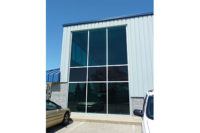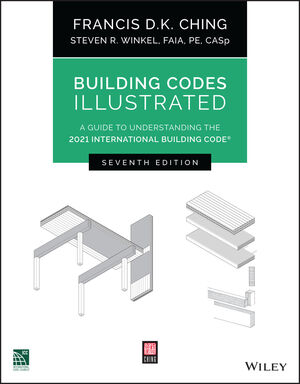What do the Declaration of Independence, the sails of the Nina, Pinta, and Santa Maria and plastic panels in BMW and Mercedes Benz automobiles all have in common? All were/are made with industrial hemp. The United States is one of the biggest consumers of industrial hemp, but due to antiquated laws associating industrial hemp with its psychoactive-drug-cousin marijuana, industrial hemp has been illegal to grow in the U.S. since 1957. That may be changing soon. The state of Kentucky recently passed legislation, joining eight other states (Colorado, Maine, Montana, North Dakota, Oregon, Vermont, Washington and West Virginia) that has defined industrial hemp as distinct from marijuana and removed barriers to its production.
State legislation is an important first step toward domestic production of industrial hemp, and work is under way to pass federal legislation to remove hemp from the Drug Enforcement Administration’s list of illicit drugs. Once this happens, farmers in the United States can again begin producing industrial hemp for the many products it is found in and can be used for.
According to the North American Industrial Hemp Council, the number of products that can be made from hemp number more than 25,000. Products that include food (milk, granola, butter, protein powder, etc.), cosmetics (moisturizing cream, shampoo, soap, deodorant), textiles (belts, pants, shirts, wallets), paper, molded plastics, medicines, livestock feed and bedding, and building materials (insulation, walls, shingles, bricks). The great variation in product types made with hemp corresponds to the great variation in the plant itself. Industrial hemp has a very low amount of the psychoactive drug contained in marijuana, too low to be a practical source of intoxicant. According to the paper “Hemp: A New Crop with New Uses for North America”:
“Both in Canada and the U.S., the most critical problem to be addressed for commercial exploitation of C. sativa [hemp] is the possible unauthorized drug use of the plant. Indeed, the reason hemp cultivation was made illegal in North America was concern that the hemp crop was a drug menace. The drug potential is, for practical purposes, measured by the presence of THC. THC is the world’s most popular illicit chemical, and indeed the fourth most popular recreational drug, after caffeine, alcohol, and nicotine. ‘Industrial hemp’ is a phrase that has become common to designate hemp used for commercial non-intoxicant purposes.”
LIME TIME
Hemp has been used for construction materials such as composite fiberboard, thermal insulation, foundation blocks, and shingles. None of these materials have made much of an impact on mainstream markets but a rediscovered building material made of hemp and lime, called Lime-Hemp Concrete. According to some sources LHC is a very old building material, discovered by archaeologists in France in a bridge abutment that was constructed between 500 to 751 A.D. Industrial hemp shiv is unique among all other natural fibers due to its high silica content. It is this property that, when mixed with lime, reacts to produce a strong, lightweight, stone-like material. Hemp shiv is also a good insulator, good for an R-value of up to 2.5 per inch. The lime in LHC surrounds and encapsulates the hemp, its high pH protecting it from mold and bacterial growth. LHC walls are vapor open, and act similarly to a mass wall, absorbing moisture and releasing it again, in either direction, without allowing bulk water to pass through the wall assembly. LHC is a sustainable material like few others.
Industrial hemp, as well as being rapidly renewable, grows in almost any climate, requires no pesticides, very little fertilizer, is fast growing and a high yield crop. Lime has a much lower embodied energy than cement, is flexible, self-healing, weather-resistant, and can be used to finish LHC as a plaster on both interior and exterior surfaces.
American Lime Technology has recently introduced a factory mixed LHC for the North American construction market called Hemcrete. Hemcrete is made from imported hemp stalk (or “shiv”) from England and domestically produced lime. The company has been working on the development of a domestic source of hemp shiv in Canada, which it hopes to begin using as early as 2014.
The ingredients for Hemcrete are sold to contractors in separate bags, and mixed on site with water to produce a woody slurry that is placed by hand within a wood-reinforced-framed wall. Walls are typically 10 to 16 inches thick, depending on required R-value. Hemcrete walls cannot be loaded vertically, but can withstand as much as a 90 mph wind load and also work very well as shear walls. Tim Callahan of Alembic Studio in Asheville, N.C., has been designing and building with LHC for several years now, having introduced the material in the United States in his first Hemcrete home, called the Nauhaus. Callahan says that, all things equal, using Hemcrete in lieu of a traditional wood framed and insulated wall adds approximately 10 percent to a home’s overall construction cost. For Callahan and his clients, the added cost is well worth the health benefits realized in using the material which include better IAQ, no allergens and no mold.
In addition to Hemcrete, American Lime Technology also offers hemp fiber insulation, prefabricated hemp wall panels, lime mortar, and lime stucco. Its hemp fiber insulation has an R-value similar to fiberglass insulation and is installed in the same way, between framing members. As well as being a rapidly renewable material, its breathability is unique and “… is able to absorb and release moisture helping to regulate internal moisture levels to enhance human comfort and reduces the risk of condensation” according to the company’s website. ALT will soon be launching prefabricated wall panels made of Hemcrete, hemp fiber insulation, wood framing, and various sheathing products. The panels are designed to be hung from wood or steel supports, as cladding or interior partitions. ALT hopes that this hemp-based product will find its way into commercial construction, as hand-placed Hemcrete is more appropriate for single family houses.
CONCLUSION
Hemp production in the United States peaked in 1943 at more than 150 million pounds on 146,000 acres in direct response to the federal government’s urging for products made from hemp in support of American troops serving in World War II. Production declined radically after the war and by the late 1950s, there was no recorded production in the U.S. Because of hemps association with marijuana, the United States Congress passed federal legislation that ensured an end to production of all forms of hemp, including industrial types.
For more than 10 years, many states and state congressmen have been campaigning for an end to this legislation to allow industrial hemp to be cultivated again on U.S. soil. Several states have enacted legislation to allow farmers to grow industrial hemp, which can be used to make a huge variety of products much more sustainably than many alternatives. Although independent reports in the U.S. indicate low potential for market growth of hemp-based products, more recent studies from Canada, which has allowed hemp farming since the late 1990s, show strong consumer demand for these products.
According to the Congressional Research Service paper Hemp as an Agricultural Commodity, “Given the existence of these small-scale, but profitable, niche markets for a wide array of industrial and consumer products, commercial hemp industry in the United States could provide opportunities as an economically viable alternative crop for some U.S. growers.”













